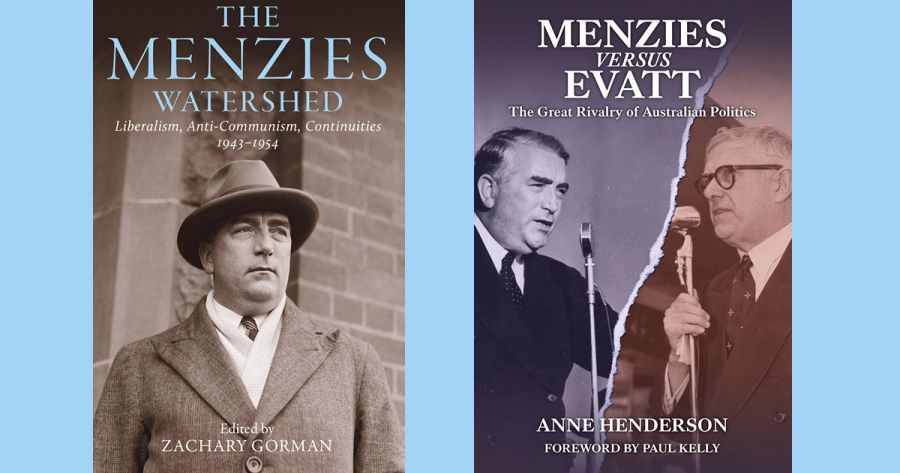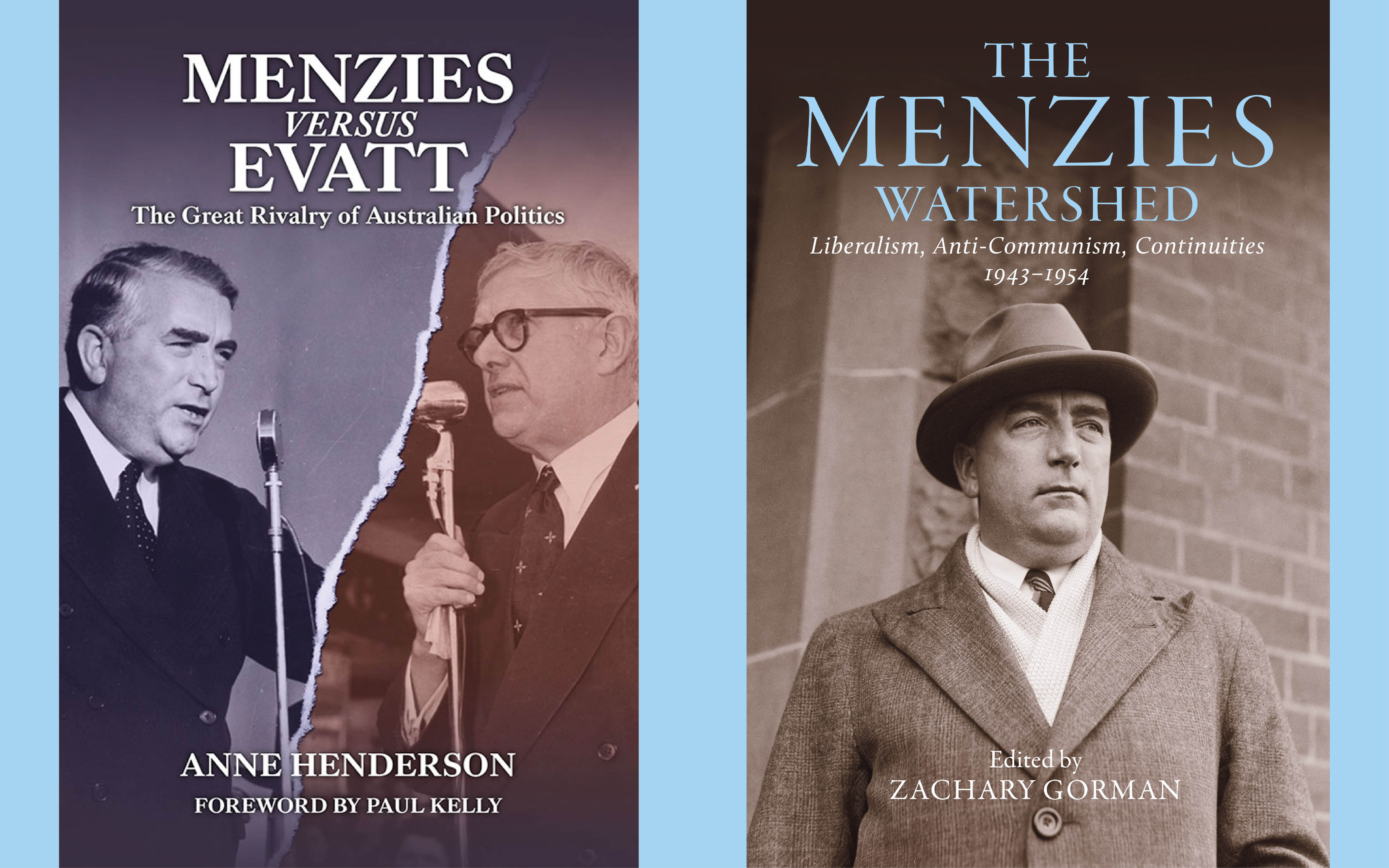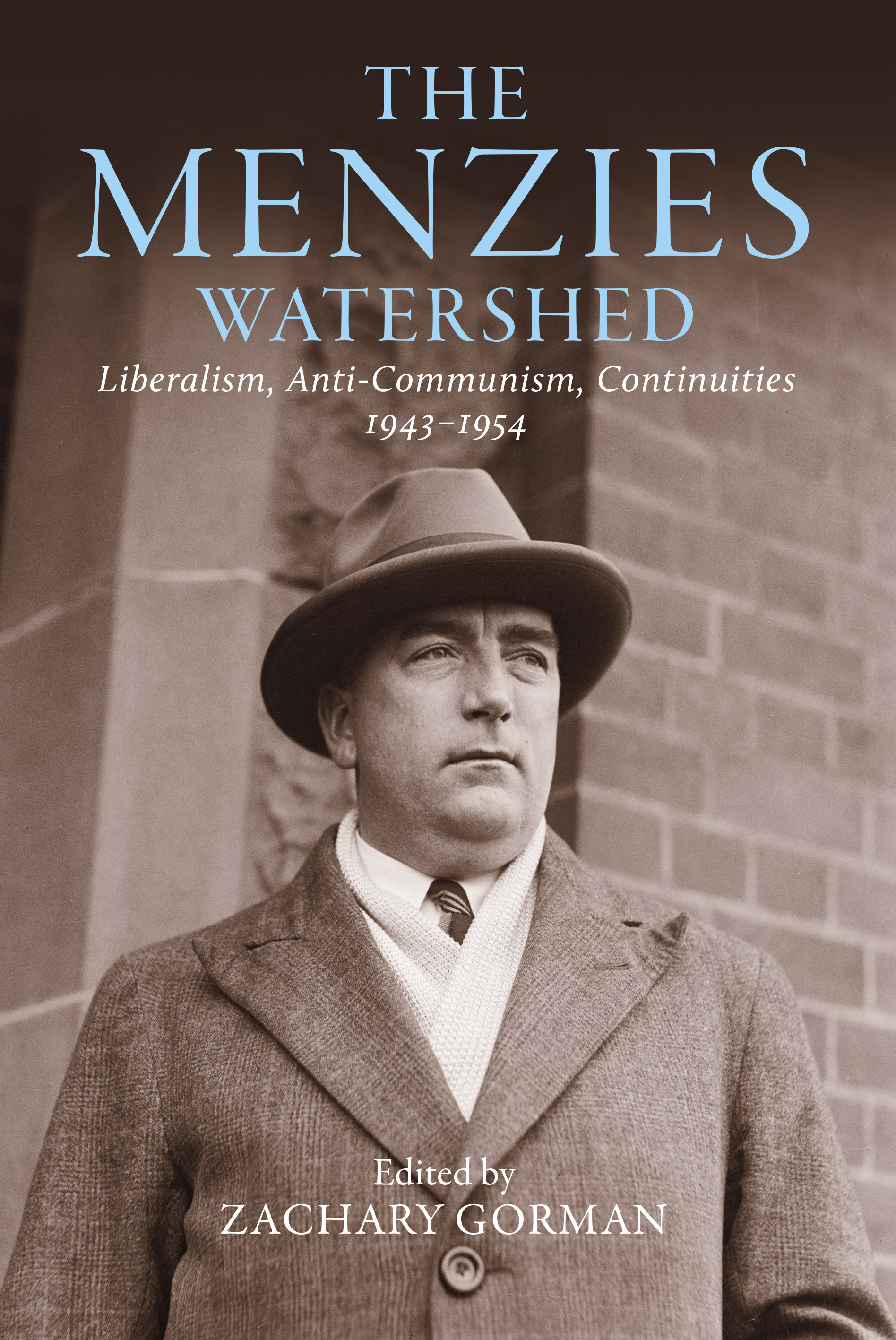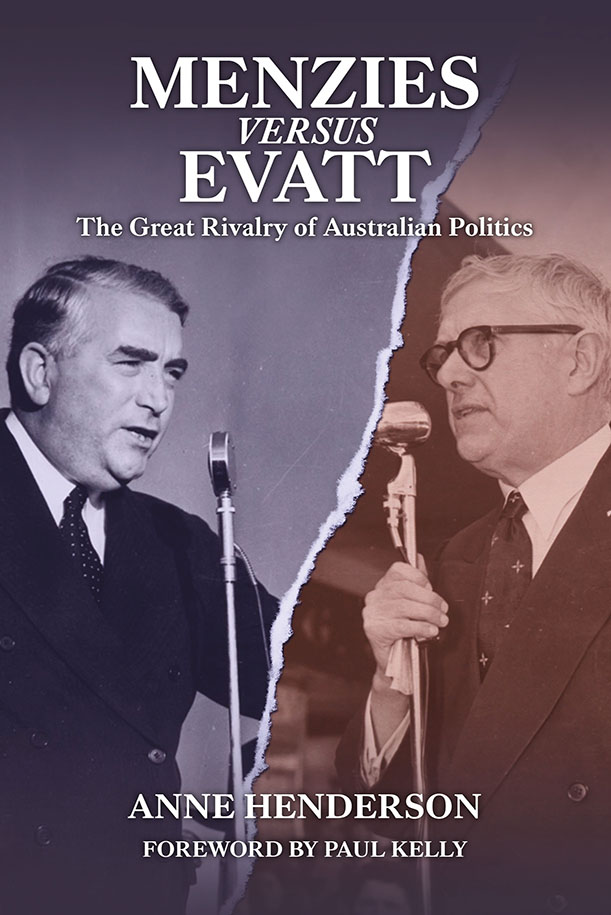
- Free Article: No
- Contents Category: Politics
- Review Article: Yes
- Article Title: The spectre
- Article Subtitle: The legacy and frailties of Robert Menzies
- Online Only: No
- Custom Highlight Text:
Bernard Cohen’s satirical novel The Antibiography of Robert F. Menzies (2013) begins shortly before the 1996 election with the titular character stepping ‘through a breach in time’ to help his successors win government. But while John Howard’s double-breasted jackets and headland speeches initially soothe this ‘large and benevolent plasmic entity’, the revenant Menzies soon becomes frustrated by the emptiness and the clichés of 1990s politics. He breaks out of the parliamentary corridors to lumber across an Australia he barely recognises, becoming ever more gigantic and spectral – pursued all the way by a writer trying to wrestle him onto the page.
- Featured Image (400px * 250px):

- Alt Tag (Featured Image): Patrick Mullins reviews ‘The Menzies Watershed’ edited by Zachary Gorman and ‘Menzies versus Evatt’
- Book 1 Title: The Menzies Watershed
- Book 1 Subtitle: Liberalism, anti-communism, continuities 1943–1954
- Book 1 Biblio: Melbourne University Press, $50 hb, 288 pp
- Book 1 Cover Small (400 x 600):

- Book 1 Cover (800 x 1200):

- Book 2 Title: Menzies versus Evatt
- Book 2 Subtitle: The great rivalry of Australian politics
- Book 2 Biblio: Connor Court Publishing, $34.95 pb, 235 pp
- Book 2 Cover Small (400 x 600):

- Book 2 Cover (800 x 1200):

As though Cohen’s novel was reality, a bevy of scribblers have been attempting to replace the plump Edwardian laird of popular memory with a political master and visionary whose revived example is still relevant. There has been Howard’s Menzies Era (2014) and its television adaptation, Building Modern Australia (2016); a biography by Troy Bramston (2019) and a monograph by Scott Prasser (2019); collections on the Menzies legacy (2016) and compilations of his speeches and writings (2017, 2020); an account of his religious faith (2021), and even a study that posited him as a forgotten figure (2021).
The most sustained effort in this antipodean Frankensteining has been underway at Ming’s alma mater, the University of Melbourne, where the Robert Menzies Institute has paired a generally reputable program of symposia, fellowships, and public events with a more partisan celebration of the legacy of the man it terms ‘Australia’s greatest prime minister’. The principal channel for that celebration has been a four-volume series tracing his life, influence, and government.
Suspicions reasonably aroused by the origin of the volumes and some of their contributors can – mostly – be set aside. The first volume, The Young Menzies (2022), explored with insight its titular subject, and the second, The Menzies Watershed: Liberalism, anti-communism, continuities 1943–1954 (2023), is notable for its focus on a period of considerable change. In 1943–54, Menzies was more expedient, vulnerable, ruthless, and conflicted than his 1960s-era Emperor Penguin pomp might suggest; one of this volume’s qualities is its ready acknowledgment of this. Discussing policy shifts from the Labor government to Menzies, Tom Switzer notes the pragmatism of the Menzies government in its early years: far from dismantling everything the Curtin and Chifley governments had done, Menzies showed ‘little inclination to actually conquer the enemy territory’. The Coalition government certainly had its own policies, such as ending wartime economic controls, but, as David Lee notes in a chapter on economic management, the continuities with its predecessors were palpable and widespread. Communism was the principal exception: early in the 1940s, as current Human Rights Commissioner Lorraine Finlay writes, Menzies’ liberalism spurred his opposition to calls to ban the Communist Party. As the decade wore on, however, the strength of that liberalism was eroded by fear and by doubts that democracy could win with ‘one hand tied behind her back’. Even friendly critics were aghast at Menzies’ change of heart. As one asked, ‘Why oppose Satan if you are going to adopt his ways?’
Some adoption of enemy ways would be rewarded. As Billy Hughes bemoaned, the 1943 election had been a cyclone to the non-Labor parties: it exposed a sharp contrast with the strength of Labor’s formidable organisation. Persuading the leaders of the remnant non-Labor parties and groups to throw in their lot and form a nationwide party, to be led by a former prime minister who had left office unlamented in 1941, was no small task. Nicolle Flint’s claim that this was ‘Menzies’ miracle alone’ is unpersuasive bombast, but the invocation of a divine intervention speaks to the improbable future for the non-Labor parties in 1943. Who among them would have envisioned a return to government in only six years’ time? Who, in even their most fevered dreams, would have thought the Liberals would still be there, on the government benches, more than two decades later?
As editor Zachary Gorman writes, these were portentous years and there is much to be found in them that bears knowing about. While the many gaps in Watershed limit its utility, chapters such as Christopher Beer’s (on the effects of Menzies government policy on the NSW Central Coast electorate of Robertson) and Lyndon Megarrity’s (on international students in Australia before and after the Colombo Plan) are interesting and illuminating.
Also centred on these years is Anne Henderson’s Menzies versus Evatt: The great rivalry of Australian politics, which dwells on the parallel lives and battles of her titular subjects. While the similarities between Menzies and ‘the Doc’ are striking – stellar students at university, early leaders at the Melbourne and Sydney Bars respectively, entrants to federal politics who arrived seemingly on divine chariot – it is the differences of temperament and outlook that are most notable, particularly as their paths became increasingly intertwined. Much of the biographical material Henderson presents has been quarried elsewhere, but she adds to a clear portrait of both men an accessible account of the broader forces at work and enlivens her account further with spiky questions about received wisdom.
H.V. Evatt’s opposition to the 1951 referendum to ban the Communist Party, for example, has typically been regarded as his finest hour, requiring him to withstand political expediency and enormous public pressure. Henderson undercuts that regard by pointing to the considerable advantages enjoyed by opponents of constitutional change and asks, considering those advantages, why the No campaign won with only 50.56 per cent of the popular vote. It is a worthwhile question, if somewhat churlish given that, six weeks before the vote, polls put support for the ban at seventy-three per cent.
Henderson is also ambivalent about Evatt’s campaigning: she acknowledges the contrast between his considerable activity and Menzies’ languor, and agrees that hyperbole is inevitable in a campaign, but she is critical of Evatt’s invocations of Pastor Niemöller and the Nazis, dismissing these as ‘histrionic assertions’. She is clear-eyed, however, about the political consequences of Evatt’s success at the referendum: while it convinced followers that he could be a leader, it also complicated Labor’s task of dispelling fears that it was susceptible to communist influence. Evatt’s subsequent disastrous handling of that task is related in bitter detail, though it edges out the rivalry with Menzies to the point that the 1955 and 1958 elections, where Menzies first began to take on an unassailable political supremacy, are dealt with perfunctorily.
In Cohen’s novel, the spectral Menzies is pursued right to the edge of the Australian continent. Stamping his foot on the rock to break it, he is, like Frankenstein, then carried away by the waves. Time is taking Menzies further and further away from modern Australia, but in his receding figure his frailties and flaws, his qualities and legacy, seem more visible and increasingly better understood.


Comments powered by CComment